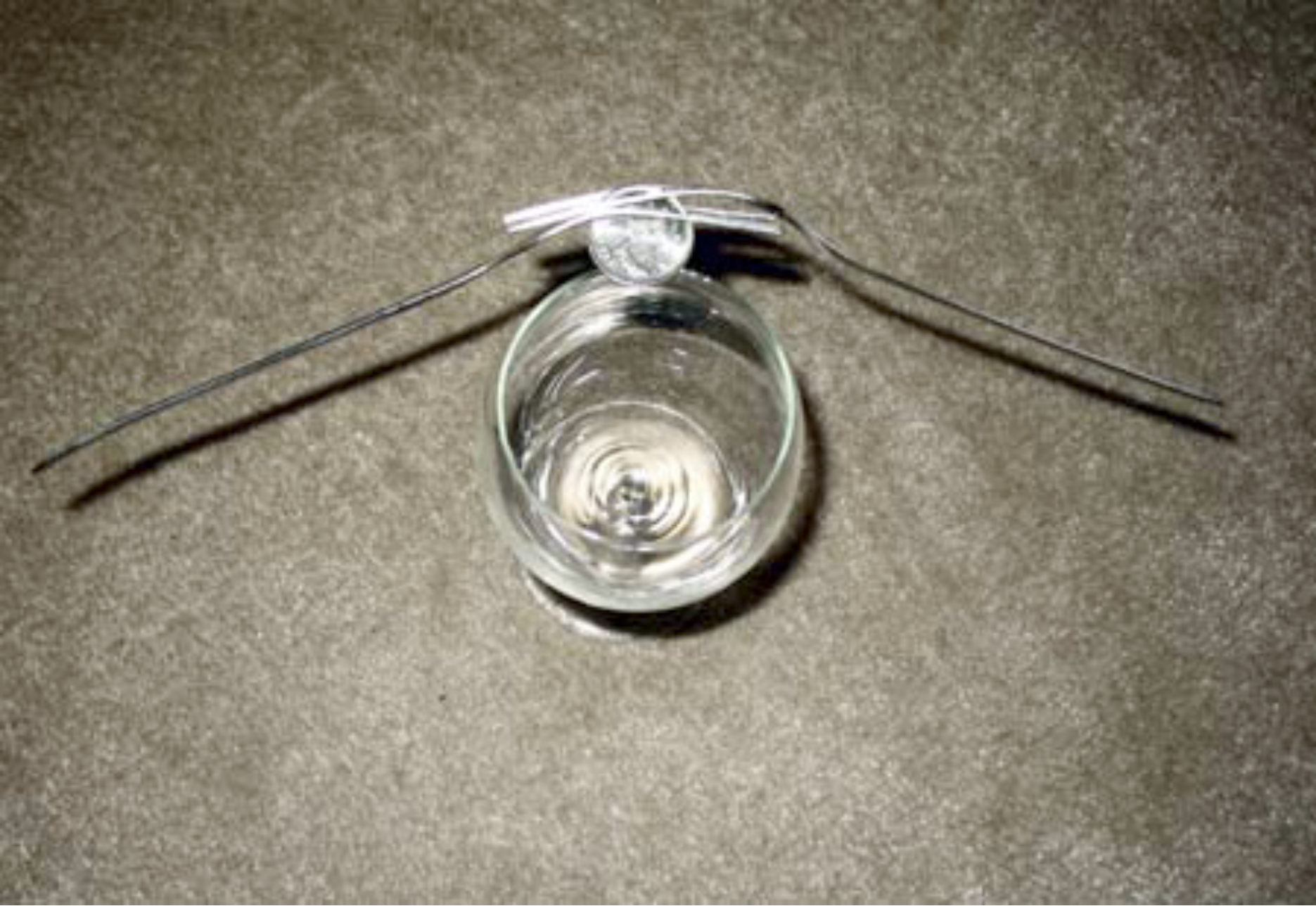Simple Centre of Mass Demonstrations
February 01, 2008 Filed in:
Demo CornerTetyana Antimirova, Ryerson University
antimiro@ryerson.ca
There are several very simple demonstrations on centre of mass that can be performed with everyday objects. In this article I describe a couple of demonstrations that I do with my students.
The first one is balancing a long object. I ask one of the students to hold a metre stick or any other object that is long enough on the top of her hands when the hands are far apart. Then I ask the students to predict what happens if the person tries to bring the hands together, moving the forefingers supporting the object from beneath towards one another very slowly. Many students will assume that it is very difficult to do because the stick will become unbalanced in the process of moving the fingers. Is this the right answer? Surprisingly for many, it is rather difficult to make the long stick lose its balance. If you ask the student to move her forefingers towards each other very slowly, the class will soon discover that it is possible to move one finger at a time along the stick, but not both!

In the case of a standard metre stick the centre of mass is at the mid-point. It is even better to attempt to balance an elongated object other than a stick or rod, when it is not known beforehand where the centre of mass is located. If you are using a metre stick and want the centre of mass to be somewhere other than the 50-cm mark, just attach one or more clamps to the stick. Balancing the object on the fingers allows the students to find the location of the centre of mass. On the photo above, the vacuum cleaner brush and holder are balanced on the top of my forefingers. This is where the centre of mass of the brush-holder system is located.
The detailed explanation of what happens when we try bringing the fingers together while balancing the long object involves friction and normal force. In the case of a metre stick without any attachments, if the fingers are initially positioned even at slightly different distances from the centre of the stick, the normal forces that the fingers exert on the stick are not equal. As a consequence, the values of the maximum static friction force to overcome are slightly different for each of the fingers. The first finger to slide under the stick is the one that was farther away from the centre of mass initially, until it stops a bit closer to the centre of mass than the other finger. The next attempt to move the fingers will result in the motion of the other finger which initially remained at rest. The process will repeat itself until the stick is balanced, with both fingers located right underneath the centre of mass.




There are a number of interesting demonstrations that involve the centre of mass of an object being situated below the point at which the object is being supported. My favourite demo in this category is balancing two forks with a coin inserted between their teeth on the outer edge of a wine glass. The forks are balanced outside the glass, and it appears as if they defy gravity. Because the handles of the forks point downward and toward the glass, the centre of mass of the “object” consisting of the coin and forks is directly below the point of contact between the coin and glass, producing stable equilibrium. The demonstration is very easy to set up, and the photograph speaks for itself. This demo was shown to me by the Stanford University graduate student Guillaume Chabot-Couture.
Column Editor: Ernie McFarland, Physics Department, University of Guelph, Guelph, Ontario, N1G 2W1 Tags: Forces



